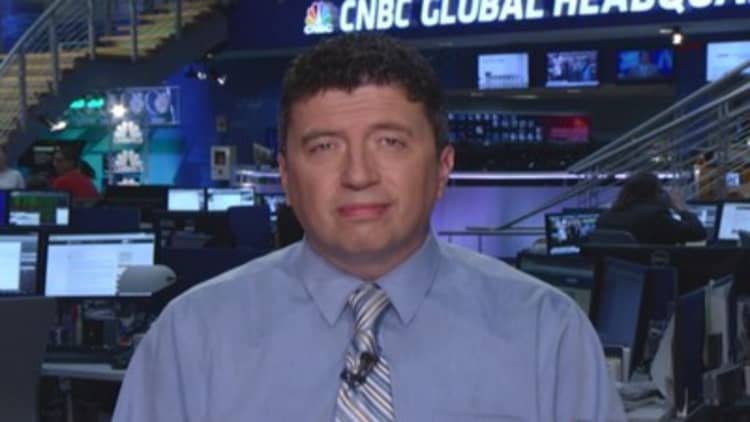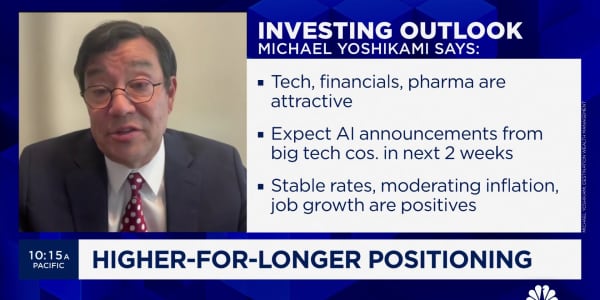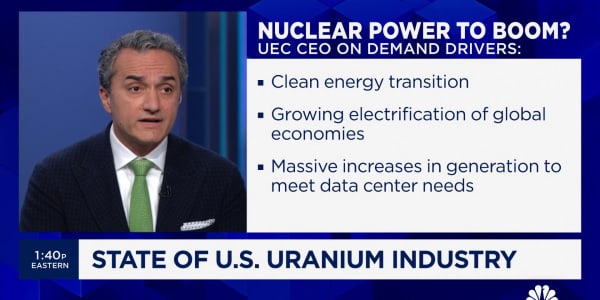
It may take a while before investors get a clear picture on just how well—or poorly—the U.S. economy is performing.
As Wall Street awaits Wednesday's reading on gross domestic product in the second quarter, two things are becoming clear: Growth is a good deal short of where most economists had expected it to be by now, and even a particularly strong showing over the past three months probably came in large part because the period before it was so bad.
"Second quarter, you're getting a bounce-back from the first quarter," Jeffrey Rosenberg, BlackRock's chief investment strategist for fixed income, told CNBC. "So maybe you've got to wait till third quarter both for revenues and earnings on the stock side as well as GDP to see the clarity. The Fed may be waiting for that as well before they take more action."
Indeed, the release of the GDP report dovetails nicely with the Federal Reserve's meeting that also concludes Wednesday. The central bank almost certainly will offer no significant changes to its ultra-easy track, as it lops another $10 billion off the monthly bond-buying program and holds short-term interest rates near zero.
The market instead will try to peer between the carefully parsed words in the Fed statement for clues that the Open Market Committee members and Chair Janet Yellen either believe the recovery is on stronger footing, or remains wobbly and needs continued accommodation.
A possibility that the Fed likely is not considering, at least as gleaned from recent statements, is that the recovery is actually significantly weaker than its current projections.
Read MoreCuts in Q2 GDP expectations cast doubt on 2nd half
One Wall Street economist believes the FOMC, and the market, could be in for a surprise.
"As in the last several years, the herd is likely to be disappointed," A. Gary Shilling wrote in a post on his firm's website. Shilling is known for accurately predicting recessions in 1969 and 1973 and the inflation that followed. Calls for global recessions in 2011 and 2013 proved less accurate.
He believes weak consumer spending combined with low levels of residential construction and exports will hold back second-quarter GDP—and possibly even indicate the U.S. is in recession.
"The big unknown, as usual, is inventory investment," he wrote. "Since it's the difference between sales and production, it's highly volatile and notoriously subject to revisions. But barring a big jump in inventories, the second-quarter real GDP growth was probably a lot closer to 1 percent than 3 percent. It could even be a negative number."
Should that happen, he said, the market could suffer that big dip that so many strategists—even those who believe in a longer-term bull market—have been predicting.
Read MoreWhy this bullish pro sees big market drop soon
"A low second-quarter real GDP number will kill the conviction that the first quarter drop was only an anomaly and it will spawn agonizing reappraisals for the rest of the year," Shilling said. "It could put the Fed on hold at least into 2016 and be great for Treasury bonds. But for stocks, look out below!"
To be sure, Shilling's call is well out of consensus.
Most economists figure Q2 GDP to come in around 2.9 percent, according to FactSet. Roughly figured, that would put total 2014 growth exactly flat, considering the first quarter generated a decline of 2.9 percent.
"Scratch the surface of this report...and you'll find a river of concern," Nick Colas, chief market strategist at ConvergEx, wrote in his daily market note Tuesday. "Private economists and the Federal Reserve chalk that up to bad weather, but in order for that claim to hold water we need a bounce back in Q2. The tea leaves are mixed here."
Colas believes the GDP reports needs to hit 3 percent to assuage the market's concerns. Paul Ashworth and Paul Dales at Capital Economics see the number at a bit north of that at 3.2 percent, though they acknowledge how uncertain things are.
Read MoreRunning not-so-scared: Investors are dumping risk
"The risks around that forecast, however, are larger than normal. One possibility is that growth in the first quarter is revised up, which could mean that second-quarter growth comes in lower than expected," the economists said in a note to clients. "While there is no particular reason to expect the annual revision to the GDP figures to significantly alter GDP growth in the first quarter, the sharp fall in GDP at the start of the year has always looked odd when set against the acceleration in employment growth."
The market, and, by extension, the Fed, are counting on a second-quarter and ultimately a full-year rebound.
"GDP really needs to hit 3 percent to preserve the notion that the U.S. economy is recovering and Q1 was truly just a blip," Colas said.
—By CNBC's Jeff Cox






